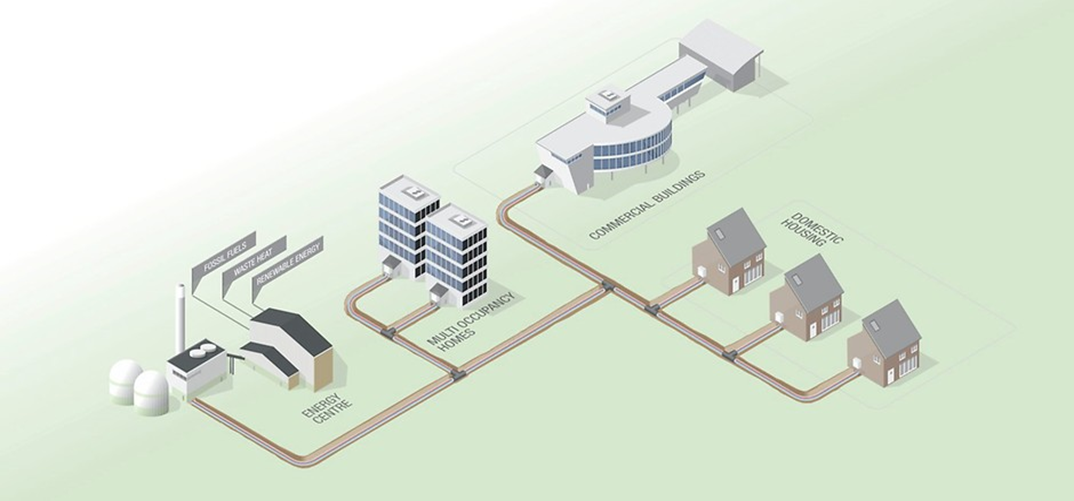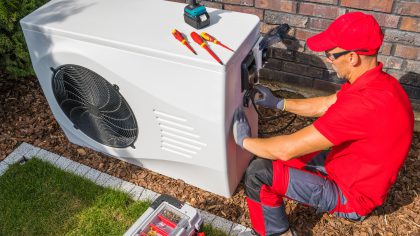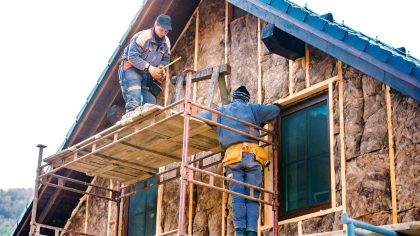Heat networks high temperature households (district heating) – small-scale
This factsheet presents generalized information and figures on heat networks for households also known as district heating. A distinction can be made between large and small scale heat distribution networks, the first having more than 5.000 connected consumers (CE, 2009; ECN, 2015).
This factsheet focuses on small scale networks. Currently, there are 219 of these networks in the Netherlands (Nationaal Warmtenet Trendrapport, 2018). It is estimated there are more than 50.000 dwelling-connections and approximately 2PJ of heat supplied by small networks in 2015 (ECN, 2017).
Downloads
Download hier de datasheet (PDF)
A typical small scale district heating network consist of a main heat source, peak/back-up heat source(s) and a distribution network including connections to the dwellings. Inside a dwelling a heat delivery set is installed (Dutch: afleverset) in order to transfer hot water to the pipes and radiators. In contrast to a large scale network there is no primary transport pipeline. Whether a substation is needed/included in a small scale network depends on the sort of network. Different heat sources can be used for instance a biomass heat plant, collective aquifer thermal energy storage (ATES), or natural gas fired CHP. In case of a biomass heat network with about 1.000 dwelling-connections there is a substation with heat exchanger. In case of a smaller network such as collective aquifer thermal energy storage (ATES) there are no substations.
A small scale heat network in the Netherlands supplies less or equal than 0,15 PJ of heat per year (ECN, 2017). These networks can also supply heat to other sectors such as to non-residential buildings. An average small scale network supplies heat to 50.000/219=230 dwellings per network and average heat supply is 2.000TJ/219= 9TJ per network. In case of a biomass plant typically 1.000 dwellings or more are connected (based on VESTA model). A typical ATES network is smaller (about 200 dwellings, for example).A network with 100 dwellings would supply 3,4 TJ per year based on a heat demand of 34 GJ/dwellings (based on VESTA model).
All information in the datasheets is also available in ESDL (Energy System Discription Language). You can find them in the Energy Data Repository (EDR).Gerelateerde onderwerpen
Gerelateerde publicaties

Inzicht in installatie van warmtepompen
Seizoenspatronen in huishoudelijk energieverbruik

Rol van airconditioning in elektriciteitsvraag
Schatting van de elektriciteitsvraag van airconditioners in Nederlandse woningen 2021, 2022 en 2030

Inkomenseffecten voor huishoudens bij woningisolatie
Inkomenseffecten van woningisolatie naar de isolatiestandaard